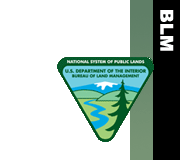|
Print Page | |||||||||||
| Ironwood Forest National Monument | ||||||||||||
Permits, Fees, Limitations No permits are required to visit the national monument. Vehicles must stay on existing routes. Accessibility There are no developed facilities on the monument. Camping and Lodging Primitive camping is available on the monument. Lodging is available in Tucson and Casa Grande. Food and Supplies The nearest stores are in Marana or Tucson, AZ. First Aid There is no first-aid available on-site. The nearest hospitals are in Tucson or Casa Grande, AZ. Additional Information The monument is a travel corridor for illegal immigrants traveling from Mexico. All suspected illegal activities should be reported to BLM or local law enforcement authorities. Visitors should stay safe by avoiding contact with persons exhibiting suspicious behavior or engaged in dangerous activities. Drive with caution and look for fast-moving vehicles and pedestrians on back roads. Some roads are rugged: high clearance or four-wheel-drive vehicles are recommended in those areas. Hazards include poisonous snakes, africanized bees, and potential encounters with illegal users of public land. Hunting is permitted through the Arizona Game and Fish Department. The national monument contains state trust lands and private lands. Recreation on state trust lands requires a permit from the State of Arizona. Visitors should not trespass on private lands. Contact the Monument office for additional information. Ironwood Forest National Monument |
||||||||||||







 Description
Description